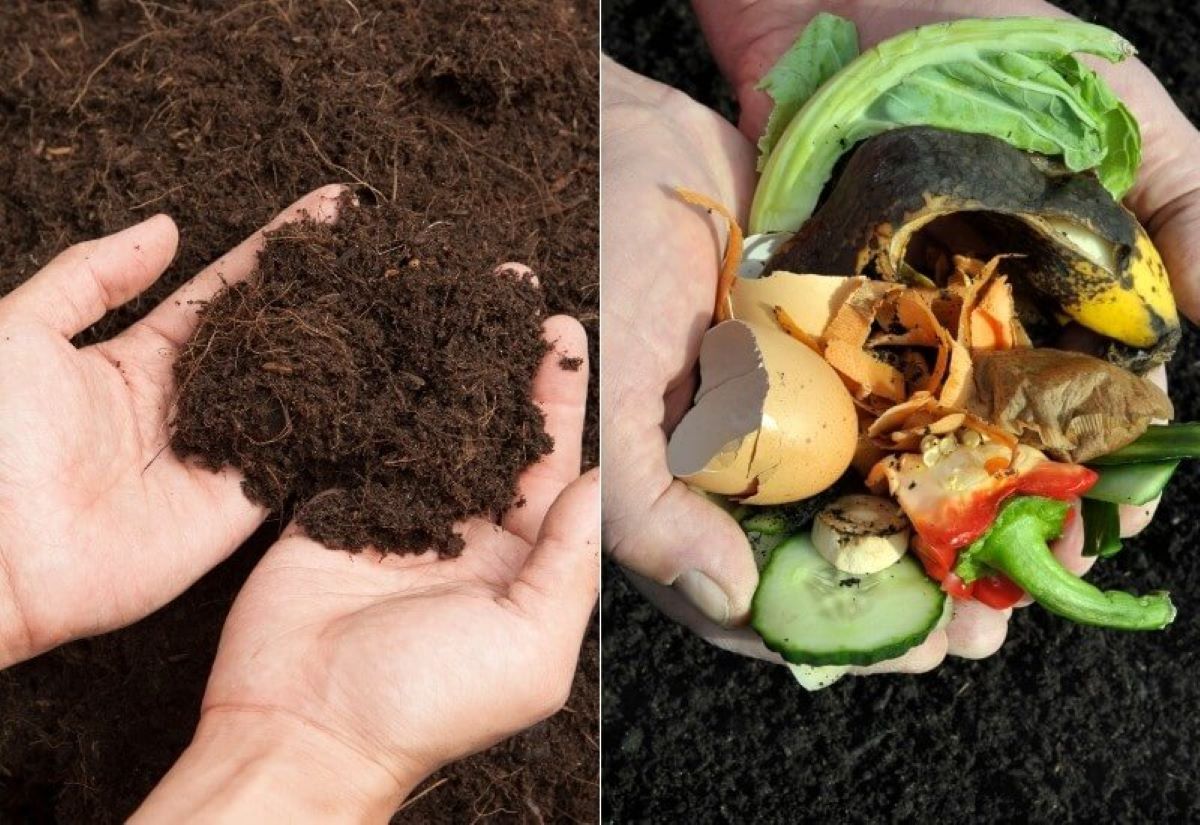Home>Gardening Tips and Tricks>Eco-Friendly Gardening>What Is The Difference Between Permaculture And Regenerative Agriculture


Eco-Friendly Gardening
What Is The Difference Between Permaculture And Regenerative Agriculture
Published: February 15, 2024
Discover the distinctions between permaculture and regenerative agriculture in eco-friendly gardening. Learn how these practices promote sustainable and resilient food production.
(Many of the links in this article redirect to a specific reviewed product. Your purchase of these products through affiliate links helps to generate commission for Chicagolandgardening.com, at no extra cost. Learn more)
Table of Contents
- Introduction
- Definition of Permaculture
- Principles of Permaculture
- Practices in Permaculture
- Definition of Regenerative Agriculture
- Principles of Regenerative Agriculture
- Practices in Regenerative Agriculture
- Key Similarities between Permaculture and Regenerative Agriculture
- Key Differences between Permaculture and Regenerative Agriculture
- Conclusion
Introduction
Welcome to the world of eco-friendly gardening! As more and more people become conscious of the environmental impacts of traditional gardening practices, there has been a growing interest in alternative approaches that promote sustainability and conservation. Two prominent methods that have gained popularity in recent years are permaculture and regenerative agriculture.
Permaculture and regenerative agriculture both seek to create sustainable and resilient food systems while minimizing harm to the planet. They provide guiding principles and practices that prioritize ecological balance, biodiversity, and soil health.
But what exactly is permaculture? How does it differ from regenerative agriculture? In this article, we will explore the definitions, principles, and practices of both methods, as well as highlight their key similarities and differences.
Whether you are a seasoned gardener looking to adopt more sustainable practices or a beginner hoping to cultivate an eco-friendly garden, understanding the concepts of permaculture and regenerative agriculture can help you make informed decisions and contribute to a greener planet.
Definition of Permaculture
Permaculture, a term coined by Bill Mollison and David Holmgren in the 1970s, is a design system that aims to create sustainable and self-sufficient human habitats by working with nature’s patterns and principles. It draws inspiration from natural ecosystems and traditional indigenous farming practices.
At its core, permaculture is about observing and understanding the relationships between different elements in a system, whether it’s plants, animals, soil, water, or human communities. It focuses on designing and implementing regenerative, low-input systems that integrate and mutually benefit all components of the ecosystem.
Permaculture principles are based on three ethical pillars: care for the earth, care for people, and fair share. These ethics guide the decision-making process and encourage practices that prioritize ecological harmony, social well-being, and the equitable distribution of resources.
Permaculture principles can be applied to various aspects of life, not just gardening or farming. It can inform decisions about sustainable housing, community development, energy systems, and even economic models.
Key elements of permaculture design include:
- Observation and interaction: By observing natural patterns and processes, permaculture practitioners can better understand how to work with nature rather than against it. Through active engagement, they can create systems that meet the needs of both humans and the environment.
- Integrate rather than segregate: Permaculture encourages the integration of different elements within a system, such as diverse plant species, animals, and beneficial insects. This integration creates synergistic relationships and enhances overall resilience.
- Use edges and value the marginal: Permaculture recognizes that the edges between different habitats or environments are often the most productive and diverse areas. By utilizing these edges, practitioners can maximize the potential of their systems.
- Obtain a yield: While permaculture focuses on ecological sustainability, it also emphasizes the importance of obtaining a yield for human needs. This could include growing food, harvesting rainwater, generating renewable energy, or producing natural fibers.
- Apply self-regulation and accept feedback: Permaculture design is an ongoing, adaptive process. Practitioners seek to understand feedback from the environment and make adjustments to ensure the system remains balanced and productive.
Permaculture is not a one-size-fits-all solution but rather a set of principles and practices that can be adapted to specific climates, landscapes, and cultural contexts. It encourages creativity, innovation, and the integration of traditional knowledge with modern technologies.
Principles of Permaculture
Permaculture is guided by a set of principles that serve as a foundation for designing and implementing sustainable systems. These principles help practitioners make informed decisions and create resilient environments that mimic natural ecosystems. While there are several variations of permaculture principles, here are some commonly recognized ones:
- Observe and interact: Taking the time to observe and understand the natural patterns, processes, and needs of an ecosystem is crucial in permaculture. By interacting with the environment, practitioners can make informed decisions and implement appropriate strategies.
- Catch and store energy: Permaculture emphasizes the efficient use of energy in all its forms. This includes capturing and storing renewable energy sources such as sunlight, rainwater, and wind, and utilizing them for productive purposes.
- Obtain a yield: Permaculture seeks to create productive systems that provide tangible benefits. This could be in the form of food, medicine, fiber, fuel, or other valuable resources that meet people’s needs.
- Apply self-regulation and accept feedback: By constantly monitoring and analyzing the performance of a system, permaculture practitioners can make adjustments and improvements. This principle encourages adaptability and continuous learning.
- Use and value renewable resources and services: Permaculture prioritizes the use of renewable resources such as solar power, water harvesting, and organic matter for nutrient cycling. It also recognizes the importance of preserving and enhancing ecosystem services like pollination and soil fertility.
- Produce no waste: In permaculture, waste is seen as a resource out of place. Practitioners aim to reduce waste by recycling and repurposing materials, using composting systems for organic matter, and minimizing pollution and environmental impact.
- Design from patterns to details: Permaculture design starts with understanding and mimicking the patterns and processes found in nature. This holistic approach ensures that the overall structure and function of the system are in harmony with the natural world.
- Integrate rather than segregate: Permaculture encourages the integration of different elements within a system to create mutually beneficial relationships. By increasing diversity and fostering symbiotic connections, practitioners enhance resilience and productivity.
- Use small and slow solutions: Permaculture recognizes the power of small-scale, incremental changes. By starting with manageable projects and allowing systems to evolve over time, practitioners can minimize risks and ensure long-term success.
- Value the marginal: Permaculture embraces the potential found in marginal areas, such as slopes or edges. These areas often offer unique opportunities for growing specific plants, capturing resources, or providing habitat for beneficial organisms.
These principles can be applied to a wide range of contexts, from backyard gardens to large-scale agricultural systems. They provide a framework for designing sustainable and resilient systems that work in harmony with nature and support the well-being of both people and the planet.
Practices in Permaculture
Permaculture encompasses a variety of practices that aim to create sustainable and regenerative systems. These practices can be implemented in different scales, from small-scale backyard gardens to larger agricultural operations. Here are some common practices in permaculture:
- Designing for Zones: Permaculture utilizes the concept of zoning to maximize efficiency and productivity. Zones are designated areas within a permaculture system based on frequency of use and intensity of care. Zone 1, for example, is located close to the home and contains high-value and frequently accessed resources, such as kitchen gardens or herb beds. Zone 5, on the other hand, is left relatively undisturbed and serves as a wild or natural area.
- Creating Polycultures: Instead of growing monocultures, permaculture emphasizes the importance of diverse and resilient plant systems. Polycultures, or mixed plantings, imitate the natural biodiversity found in ecosystems. By growing a variety of complementary plants, practitioners can enhance pest control, nutrient cycling, and overall ecosystem health.
- Implementing Agroforestry: Agroforestry is the integration of trees or shrubs with other food crops or livestock. This practice not only maximizes land use efficiency but also provides multiple benefits such as shade, windbreaks, erosion control, and habitat for beneficial insects and animals.
- Using Perennial Plants: Permaculture encourages the use of perennial plants, which are long-lived and require less maintenance compared to annuals. Perennials offer the advantage of providing consistent yields over time and promoting soil health through their deep root systems.
- Applying Mulching and Composting: Mulching is the practice of covering soil with organic materials, such as straw, leaves, or wood chips. It helps retain moisture, suppress weeds, regulate soil temperature, and improve soil structure. Composting, on the other hand, transforms organic waste into nutrient-rich soil amendments, reducing the need for synthetic fertilizers.
- Harvesting Rainwater: Permaculture emphasizes the capture and efficient use of rainwater to minimize dependence on limited freshwater resources. Techniques such as rainwater harvesting systems, swales, and contouring can help collect and store rainwater for irrigation purposes.
- Integrating Livestock: Livestock play a vital role in permaculture systems by providing nutrient cycling, weed control, and additional income streams. Thoughtful integration of animals, such as chickens for pest control or goats for brush clearance, can contribute to the overall resilience and productivity of the system.
- Building Sustainable Structures: Permaculture extends beyond gardening and agriculture. It also emphasizes sustainable design and construction of buildings and infrastructure. Utilizing eco-friendly materials, passive solar design, and renewable energy systems can help create self-sufficient and energy-efficient living spaces.
These practices, combined with the guiding principles of permaculture, work together to create regenerative and sustainable systems that promote ecological balance, conserve resources, and support local communities.
Definition of Regenerative Agriculture
Regenerative agriculture is an ecological approach to farming and land management that aims to restore and enhance the health of the soil, biodiversity, and ecosystem functions. It goes beyond sustainability by actively seeking to regenerate degraded land and reverse the effects of climate change.
Regenerative agriculture recognizes that healthy soil is the foundation of a thriving ecosystem. It focuses on building and preserving soil organic matter, improving soil structure, and promoting beneficial soil microorganisms. By implementing practices that mimic natural processes, regenerative agriculture aims to regenerate soil health, increase resilience to pests and diseases, and enhance nutrient cycling.
Regenerative agriculture is guided by a set of core principles:
- Promote soil health: Regenerative agriculture prioritizes practices that enhance soil quality and fertility. This includes minimizing tillage, using cover crops and crop rotations, and integrating livestock grazing to improve soil structure and organic matter content.
- Maximize biodiversity: Biodiversity is essential for building healthy ecosystems. Regenerative agriculture encourages the planting of diverse crops, promoting native vegetation, and creating habitats for beneficial insects, birds, and wildlife.
- Minimize chemical inputs: Regenerative agriculture aims to reduce or eliminate the use of synthetic fertilizers, pesticides, and herbicides. Instead, it focuses on organic and ecological approaches to pest and weed management, such as companion planting, biological controls, and regenerative crop selection.
- Manage water wisely: Water is a precious resource, and regenerative agriculture emphasizes efficient water management. This includes implementing techniques such as conservation tillage, drip irrigation, and water-harvesting practices to minimize water use and enhance water infiltration.
- Address climate change: Regenerative agriculture recognizes the role of agriculture in mitigating and adapting to climate change. Practices such as agroforestry, carbon sequestration through cover cropping, and rotational grazing can help reduce greenhouse gas emissions and enhance carbon storage in the soil.
- Support social equity: Regenerative agriculture promotes fair labor practices, community engagement, and the empowerment of farmers and farm workers. It recognizes the importance of a just and equitable food system that benefits both producers and consumers.
Regenerative agriculture utilizes a holistic approach, considering the interconnectedness of soil, plants, animals, water, and people. It aims to create regenerative food systems that provide nutrient-dense, environmentally sustainable, and socially responsible food for present and future generations.
Principles of Regenerative Agriculture
Regenerative agriculture is guided by a set of principles that promote ecological restoration and sustainability in farming and land management practices. These principles help farmers and land stewards work in harmony with nature to regenerate soil health, promote biodiversity, and mitigate climate change. While there are various interpretations of regenerative agriculture principles, here are some commonly recognized ones:
- Focus on soil health: Regenerative agriculture prioritizes the improvement and preservation of soil health as the foundation for sustainable farming. Practices such as minimal tillage, cover cropping, and the use of organic amendments enhance soil structure, organic matter content, and nutrient cycling.
- Promote biodiversity: Biodiversity is crucial for resilient ecosystems. Regenerative agriculture emphasizes planting diverse crops and utilizing diverse vegetation to support beneficial insects, birds, and wildlife. Creating habitat corridors and preserving native species also contribute to biodiversity conservation.
- Minimize chemical inputs: Regenerative agriculture seeks to minimize or eliminate the use of synthetic fertilizers, pesticides, and herbicides. Instead, it encourages organic and ecological approaches to pest and weed management, such as integrated pest management, crop rotation, and biological controls.
- Manage water wisely: Water is a finite resource, and regenerative agriculture aims to use it efficiently. Practices such as conservation tillage, mulching, and precision irrigation reduce water waste and enhance water retention in the soil. Water-harvesting techniques, such as swales and rain gardens, can also be implemented.
- Sequester carbon: Regenerative agriculture recognizes the role of agriculture in mitigating climate change. Practices such as agroforestry, cover cropping, and rotational grazing can enhance carbon sequestration in the soil, helping to reduce greenhouse gas emissions and combat global warming.
- Promote animal welfare: Regenerative agriculture integrates livestock as a key component of sustainable systems. Practices such as rotational grazing and providing access to diverse forage promote animal welfare, minimize environmental impact, and contribute to nutrient cycling.
- Engage in regenerative planning and design: Regenerative agriculture emphasizes the importance of thoughtful planning and design to create productive and sustainable landscapes. This includes considering factors such as topography, climate, water resources, and biodiversity in the development and management of farms and agricultural systems.
- Collaborate with nature: Regenerative agriculture recognizes that nature is the ultimate teacher. It encourages farmers and land stewards to observe and learn from natural ecosystems, mimic their patterns and processes, and cultivate partnerships with beneficial organisms and ecological cycles.
These principles serve as a framework for regenerative agriculture practices, promoting resilience, ecological balance, and the long-term sustainability of farming systems. By adopting these principles, farmers and land stewards can contribute to the restoration and regeneration of our planet’s ecosystems and ensure a more sustainable future for agriculture.
Practices in Regenerative Agriculture
Regenerative agriculture encompasses a range of practices that aim to restore and enhance the health of ecosystems while ensuring sustainable food production. These practices focus on improving soil health, promoting biodiversity, and mitigating climate change. Here are some commonly employed practices in regenerative agriculture:
- Cover cropping: Planting cover crops, such as legumes or grasses, during fallow periods or between cash crops helps protect and nourish the soil. Cover crops prevent erosion, improve soil structure, and fix nitrogen, reducing the need for synthetic fertilizers.
- Crop rotation: Rotating crops helps break pest and disease cycles, improves soil fertility, and reduces the buildup of pathogens. By alternating different crop species, farmers can maintain soil health and nutrient balance, allowing for more sustainable and resilient farming systems.
- No-till or reduced tillage: Minimizing soil disturbance through no-till or reduced tillage practices preserves soil structure, prevents erosion, and enhances carbon sequestration. These practices also conserve moisture, increase organic matter content, and support soil microbial activity.
- Agroforestry: Integrating trees or perennial crops with annual crops or livestock can enhance biodiversity, reduce soil erosion, provide shade and windbreaks, and promote carbon sequestration. Agroforestry systems, such as alley cropping or silvopasture, offer multiple benefits for both the environment and farmers.
- Pasture management: Implementing rotational grazing systems allows livestock to graze on different sections of pastureland, ensuring adequate forage regrowth while preventing overgrazing. This practice promotes soil health, biodiversity, and the efficient use of grazing resources.
- Compost and nutrient management: Utilizing compost and organic amendments enhances soil fertility, improves nutrient cycling, and reduces reliance on synthetic fertilizers. Proper nutrient management practices, such as soil testing and precision application, ensure optimal plant nutrition while minimizing environmental impacts.
- Water management: Efficient water management practices, such as drip irrigation, rainwater harvesting, and contouring, help conserve water resources and reduce runoff. These practices also promote healthy plant growth, prevent soil erosion, and enhance soil moisture retention.
- Conservation of natural habitats: Creating and preserving natural habitats, such as riparian zones, hedgerows, and wetlands, supports biodiversity and provides refuge for beneficial insects, birds, and wildlife. These habitats contribute to pest control, pollination, and overall ecosystem health.
It is important to note that regenerative agriculture practices are contextual and adaptable to different agricultural systems and local conditions. Farmers and land stewards can combine and modify these practices based on their specific goals, available resources, and ecological considerations.
By implementing these regenerative agriculture practices, farmers can enhance the health and resilience of their farming systems, reduce environmental impacts, and contribute to the long-term sustainability of our food production systems.
Key Similarities between Permaculture and Regenerative Agriculture
Permaculture and regenerative agriculture share many core principles and practices, making them highly complementary approaches to sustainable and ecologically conscious farming. Here are some key similarities between the two:
- Focus on ecological health: Both permaculture and regenerative agriculture prioritize the health and vitality of ecosystems. They emphasize building and maintaining soil health, promoting biodiversity, and enhancing ecosystem services, such as pollination and natural pest control.
- Emphasis on sustainability: Both approaches seek to create sustainable farming systems that minimize environmental impacts and conserve natural resources. They prioritize long-term ecological, social, and economic sustainability instead of focusing solely on short-term gains.
- Resilience to climate change: Permaculture and regenerative agriculture recognize the importance of addressing climate change through their practices. They both aim to mitigate climate impacts by sequestering carbon in the soil, utilizing sustainable water management techniques, and enhancing system resilience to extreme weather events.
- Integration of different elements: Both approaches emphasize the integration of various components within a farming system. In permaculture, diverse plant and animal species are intentionally combined to create mutually beneficial relationships. Similarly, regenerative agriculture promotes the integration of trees, crops, and livestock to enhance biodiversity and ecosystem function.
- Minimization of external inputs: Permaculture and regenerative agriculture strive to reduce reliance on synthetic inputs such as fertilizers and pesticides. Instead, they prioritize organic and ecological approaches, such as composting, crop rotations, and biological controls, to enhance nutrient cycling, pest management, and soil fertility.
- Focus on regenerative practices: Both permaculture and regenerative agriculture seek to regenerate and restore degraded lands and ecosystems. They prioritize practices that improve soil health, enhance biodiversity, and rejuvenate ecosystems, ultimately leading to increased productivity and resilience.
- Holistic approach: Permaculture and regenerative agriculture embrace a holistic view of farming systems, considering the interconnections between soil, plants, animals, water, and human communities. They aim to create harmonious and integrated systems that function as self-sustaining, self-regulating, and regenerative units.
- Community and knowledge sharing: Permaculture and regenerative agriculture foster a sense of community and encourage knowledge sharing among farmers, land stewards, and enthusiasts. They both emphasize the importance of education, networking, and collaboration to promote sustainable agricultural practices on a broader scale.
While permaculture and regenerative agriculture have their unique aspects, they share a strong commitment to ecological stewardship, sustainable food production, and the regeneration of our planet’s natural systems. Together, they provide valuable frameworks and practices that can guide farmers and land stewards towards a more sustainable and resilient future.
Key Differences between Permaculture and Regenerative Agriculture
Although permaculture and regenerative agriculture share many similarities, there are also distinct differences between the two approaches. These differences stem from variations in their origins, scope, and specific methodologies. Here are some key differences:
- Origin and Scope: Permaculture originated as a design system that encompasses various aspects of sustainable living beyond agriculture, including eco-friendly housing, energy systems, and community development. Regenerative agriculture, on the other hand, specifically focuses on sustainable farming and land management practices.
- Design Approach: Permaculture places a strong emphasis on designing human habitats or systems that work in harmony with nature. It seeks to create functional and interconnected spaces that meet human needs while supporting ecosystem health. In contrast, regenerative agriculture primarily focuses on regenerating and enhancing the health of agricultural ecosystems.
- Use of Perennial Plants: Permaculture often prioritizes the use of perennial plants, such as fruit trees or perennial crops, to create more stable and long-lasting ecosystems. Regenerative agriculture, while recognizing the benefits of perennial plants, also includes annual crop production as a primary component.
- Level of Intensity: Permaculture can vary significantly in terms of its intensity and scale. It can range from small-scale backyard gardens to large-scale farms or intentional communities. Regenerative agriculture generally focuses on agricultural practices that can be applied at various scales, from small farms to large-scale agroecosystems.
- Approach to Livestock: Permaculture often incorporates livestock as an integral component, utilizing animals for various functions such as soil fertility management, weed control, and nutrient cycling. While regenerative agriculture also recognizes the importance of livestock, it may not prioritize the integration of animals to the same extent as permaculture does.
- Emphasis on Zone Design: Permaculture employs a key design concept called “zones,” which classifies areas based on their proximity to human activity and the frequency of use. These zones help optimize resource allocation and minimize energy inputs. Regenerative agriculture may not specifically utilize this zone design approach in the same way.
- Focus on Self-Sufficiency: Permaculture often emphasizes the goal of self-sufficiency, aiming to meet a significant portion of the community’s needs through on-site resources and sustainable practices. Regenerative agriculture, while promoting sustainable farming practices, may not have the same emphasis on self-sufficiency and instead may focus on regional and global food systems.
While these differences exist, it is important to note that permaculture and regenerative agriculture share common goals of promoting sustainability, ecological health, and resilience. Both approaches provide valuable insights and practices that can be combined and adapted to create more sustainable and regenerative farming systems.
Conclusion
Permaculture and regenerative agriculture are two approaches that share a common vision of creating sustainable and ecologically conscious farming systems. While permaculture encompasses a broader scope that extends beyond agriculture, regenerative agriculture focuses specifically on sustainable farming and land management practices.
Both approaches prioritize ecological health, sustainability, and resilience to climate change. They emphasize building and maintaining soil health, promoting biodiversity, minimizing the use of external inputs, and managing water resources wisely. By implementing principles such as observing and interacting with nature, maximizing biodiversity, and integrating different elements, farmers and land stewards can create productive and regenerative systems.
Permaculture and regenerative agriculture differ in terms of their origin, scope, level of intensity, and specific methodologies. Permaculture incorporates design principles and approaches beyond farming, aiming to create sustainable human habitats. Regenerative agriculture, on the other hand, specifically focuses on agricultural practices that enhance ecosystem health and productivity.
However, despite these differences, the commonalities between permaculture and regenerative agriculture are significant. Both approaches strive to restore and regenerate degraded land, promote sustainable food production, and mitigate climate change. They also recognize the importance of biodiversity, minimizing chemical inputs, and engaging in holistic planning and design.
Ultimately, by adopting practices from both permaculture and regenerative agriculture, farmers and land stewards can cultivate sustainable and resilient farming systems that prioritize ecosystem health, provide nutritious food, and contribute to the well-being of our planet and future generations.









